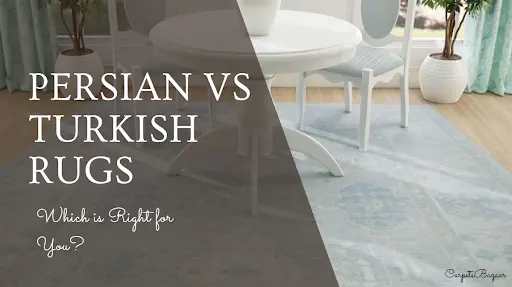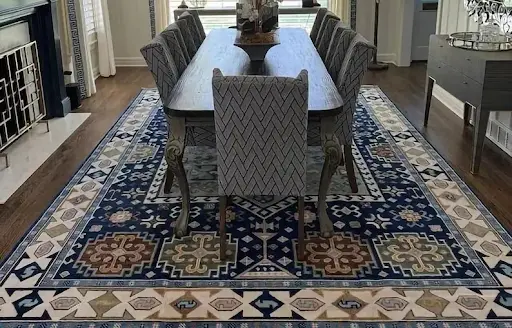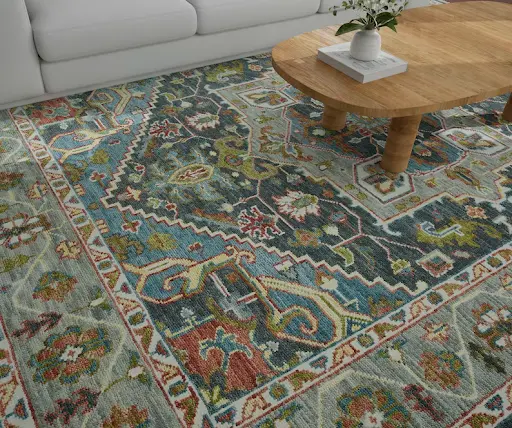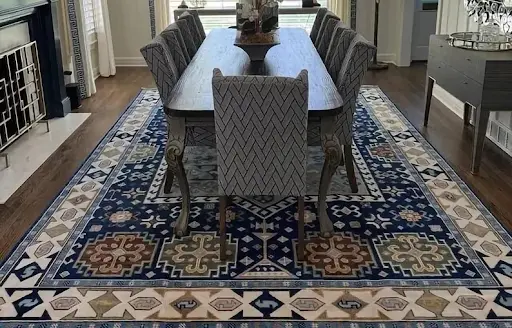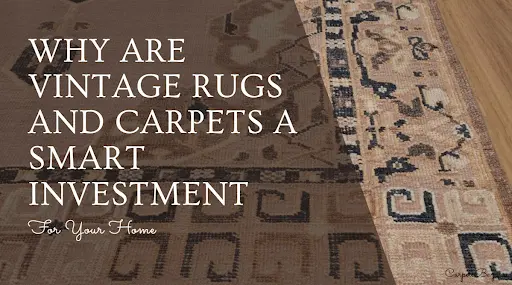Persian vs Turkish Rugs: Which is Right for You?
Have you ever wondered, ‘Persian vs Turkish Rugs – What are Key Differences? ’. It’s an important difference to understand when trying to buy the perfect carpet for your home! However, the right rug for you isn’t simply about colour or size. It’s a matter of heritage, of authentic craftsmanship, and the history behind its making!
The two traditions of carpet-making, Turkish and Persian, are both celebrated for their durability, artistry and beauty. Yet, they’re miles apart from each other, both geographically and in technique! So, let’s understand this difference by asking:
Persian vs Turkish Rugs – What are the key differences?
Both Persian and Turkish rugs are handmade masterpieces, but there are many differences in the details. If you’re wondering how to tell Persian rug from Turkish rug, here are some good places to start:
Knotting Technique:
Persian rugs boast a certain quirkiness with their asymmetric or ‘Senneh’ knots. These knots allow artisans to create smooth curves and designs which seem to flow across the carpet. Meanwhile, Turkish rugs use symmetric, ‘Ghiordes’ knots which enable incredible precision and strength. This gives them a firmer texture, making them excellent for high-traffic areas!The knotting technique is thus a useful and easy-to-catch giveaway of the identity of the rug. This also means you can often find Persian rugs in more private areas, while the durable Turkish rugs occupy the main halls!
Patterns & Design:
As discussed, the very technique of Persian rug-making allows for smooth curves in their designs. Thus, these often feature ornate floral designs with central medallions. It feels like walking on a piece of urban art! Whereas with Turkish rugs, the designs are all about bold geometric shapes and tribal motifs. A symmetry runs through the design, which revels in its rural and nomadic influences!
Color Palettes:
Persian rugs favour rich, vibrant, jewel colours, being all about opulence and luxury. These carpets thus come in colours like deep reds, sapphire blues and golds! Turkish rugs, on the other hand, aim to bring warmth and character. Accordingly, they feature earthy tones with high contrast, providing vibrancy while still maintaining a grounded feel. These colour palettes are as iconic as they are timeless, and are one of the major points of difference between the two traditions! Check out our guide on rug colors for neutral interiors to find shades that work effortlessly
Region & Heritage:
As is very obvious from the name, the two rug traditions come from two different regions. Persian rugs come from Iran, from cities like Tabriz, Isfahan, and Kashan. However, it is important to note that each city also boasts its own signature influences, making the Persian rugs all the more diverse! Turkish rugs originate from Anatolia, Turkey. These rugs thus often display tribal patterns reflecting centuries-old nomadic lifestyles.
Durability & Wear:
The two rug types are both designed to last for generations. However, they vary in their objectives and priorities, which affects their lifetime as well! The symmetric, Turkish rugs are particularly durable, and are absolutely the sturdier of the two types. Persian rugs, meanwhile, prioritise their detailed artistry, and accordingly require careful upkeep based on material used. Yet, these rugs can remain vibrant and useful for whole centuries if maintained well, which makes them a very attractive option!
Persian vs Turkish Rugs – Which Fits Your Home?
If you’re wondering which rug is right for your home, there are some design choices you should keep in mind. Choosing between Persian rug vs Turkish rug depends on your interior, lifestyle, and personal taste:
- For Classic & Traditional Interiors: Absolutely go for Persian rugs! Their floral prints, medallion patterns and deep, vibrant colours bring any place alive elegantly! Moreover, they bring out the beauty and luxury of wooden furniture, antiques and traditional decor. Persian rugs anchor the room excellently, and create the perfect feel you would want in a classic, traditional interior!
- For Modern & Minimalist Spaces: Modern designs are all about efficiency. They bombard the eyes as little as possible, while still providing coziness and warmth. These are exactly the strengths of Turkish rugs! They create exhilarating contrasts with their geometric patterns and earthy tones, bringing alive your neutral furniture! You may also pair them with clean-lined sofas and minimal decor, and make an instant impact on the eyes!
- For Eclectic or Bohemian Rooms: Mix both types! Combine a Persian rug as the centerpiece with smaller Turkish rugs layered around the room. Go creative with textures and colours, mix the wildest patterns, truly just have fun! These rooms are thus all about visual interest, and making the place feel lived-in and personal.
- For High-Traffic Areas: Turkish rugs are the way to go! Since they’re designed for durability, they are the ideal choice for hallways, living rooms, or really any space with pets or children. Moreover, they boast extremely high quality weaves ensuring their longevity.
Styling Tips for Persian & Turkish Rugs
Below are some go-to tips for making your Persian or Turkish rug truly stand out.
- Pairing with Furniture: Persian rugs are all about complementing traditional furniture, or even antique ones with their luxurious colours. Turkish rugs, on the other hand, pair better with modern, minimalist room designs. Your rug can thus be used as the foundation of your room design!
- Color Coordination: Since Persian rugs embody luxury, reflect their colours in other luxury items! Perhaps you have cushions or curtains or even throws, where you can echo the accent colours of the rug. Turkish carpets fare better as standalone pieces. Thus, you’d be better off keeping the colours and patterns minimal to avoid a sensory overload.
- Layering Rugs: Layering adds texture and depth. Try a neutral jute or sisal base with a Persian or Turkish rug on top. This works especially well in large rooms, creating warmth and character while allowing you to experiment with colors and patterns.
- Identifying Rugs: Go through ‘What are Key Differences Between Persian and Turkish Rugs?’, and understand their differences. Examine the knot type, look for floral vs geometric motifs, and study the color palette. Then, understand the room design style you’re going for, and mix and match! Following these steps helps when investing in a rug that suits both style and function.
FAQs on Persian vs Turkish Rugs
Q. Which rug is more expensive, Persian or Turkish?
Ans: Persian rugs, especially silk-accented or hand-knotted designs, are often pricier due to intricate artistry. Turkish rugs are handmade too, but generally slightly more affordable.
Q: Are Turkish rugs durable?
Ans: Absolutely! Their symmetric knot provides excellent longevity, making them suitable for busy households and high-traffic areas.
Q: Can Persian and Turkish rugs be mixed?
Ans: Yes! Mixing adds layered texture and visual interest. Balance colors and patterns for harmony.
Q: Do Persian rugs require special care?
Ans: Delicate Persian rugs benefit from gentle vacuuming and occasional professional cleaning, particularly silk-enhanced pieces.
Q: Which is better for a modern living room?
Ans: Turkish rugs usually suit contemporary aesthetics, thanks to bold geometric designs. A muted Persian rug can also work with thoughtful placement and styling.
Choosing between Turkish vs Persian carpet is thus, about more than just looks. It’s about history, craftsmanship, and your home’s personality. Persian rugs offer luxury and vibrancy, while Turkish rugs combine geometric elegance with durability. Now that you understand their advantages, use your learnings, and find your ideal Persian or Turkish rug at CarpetsBazaar.
There are no comments


